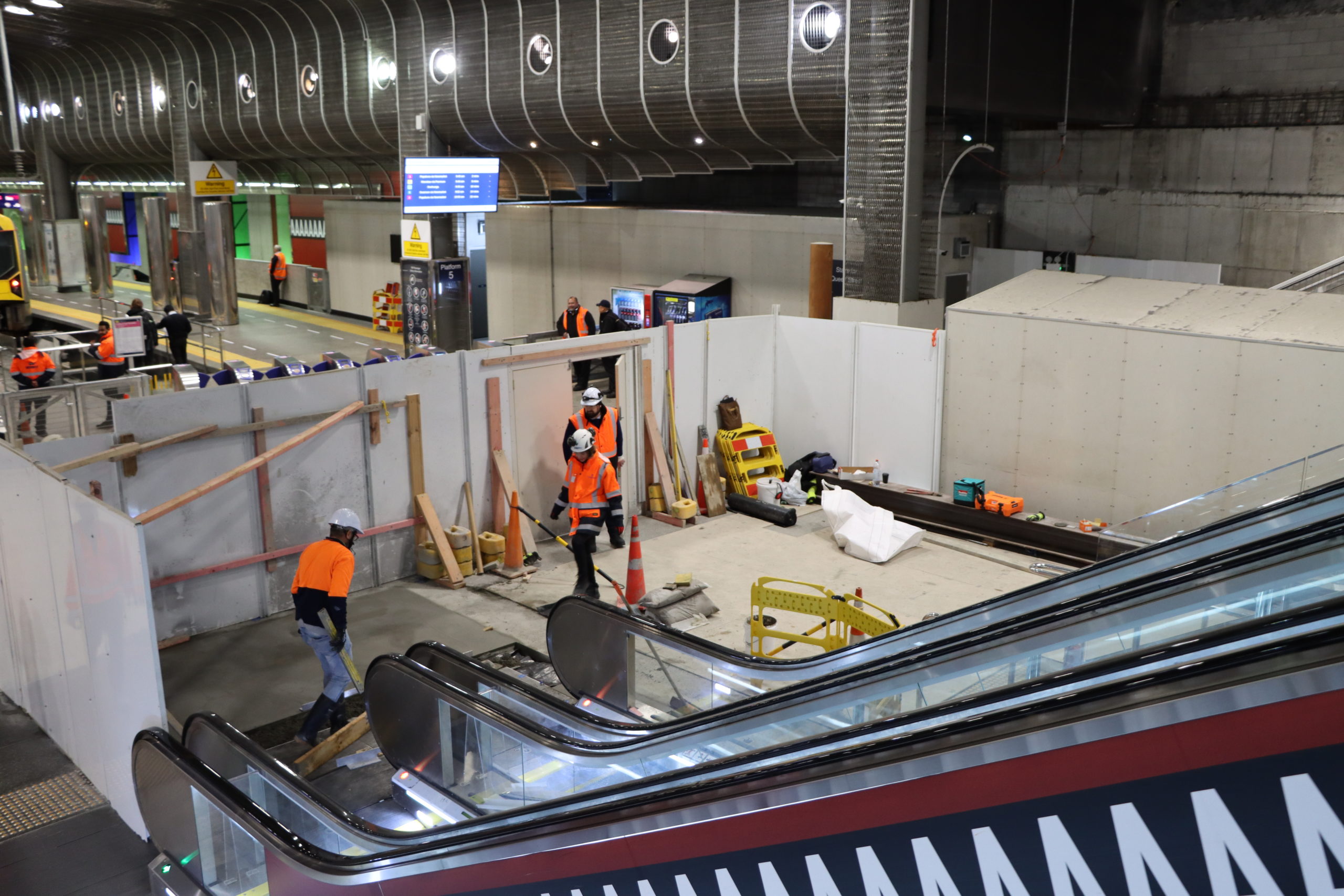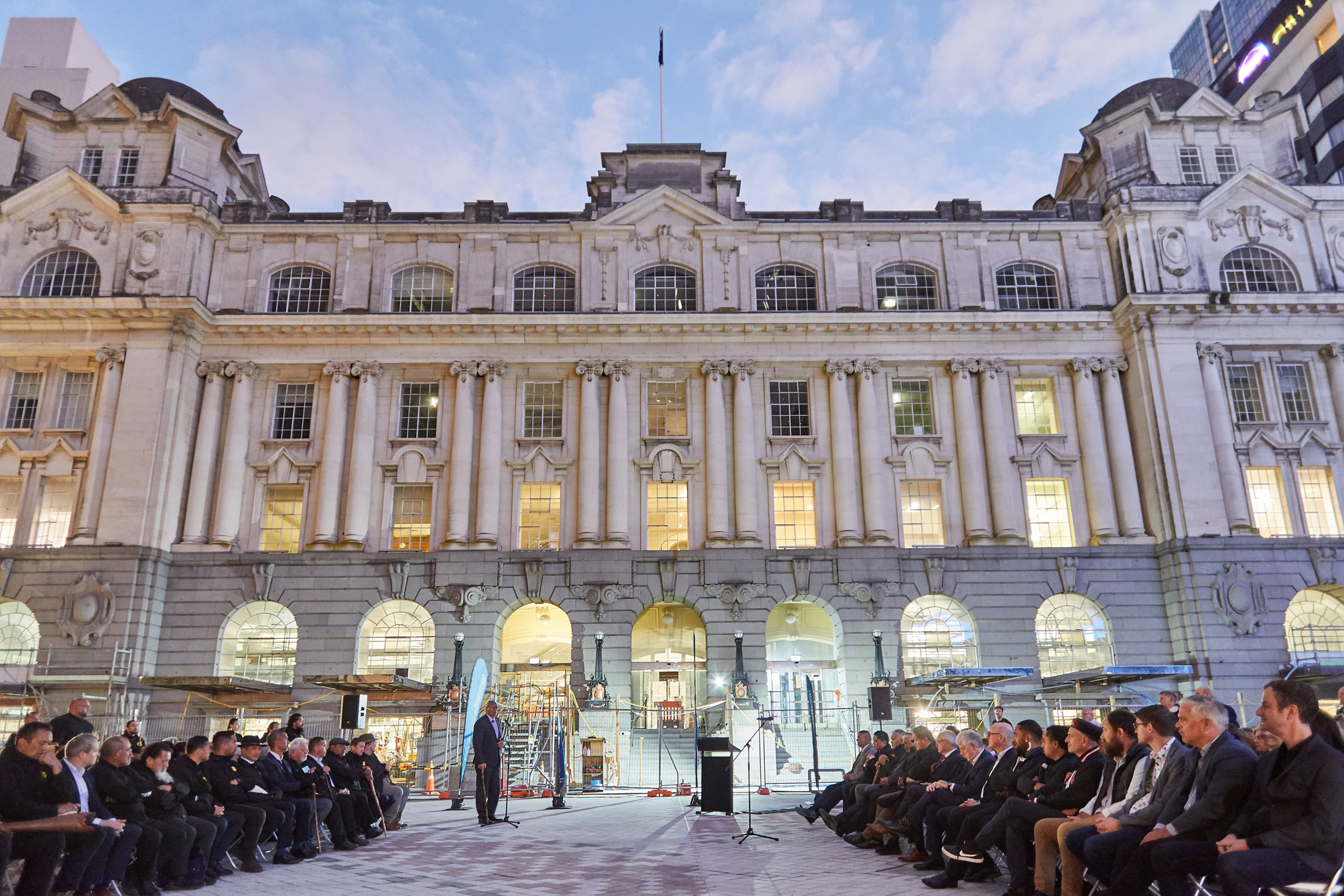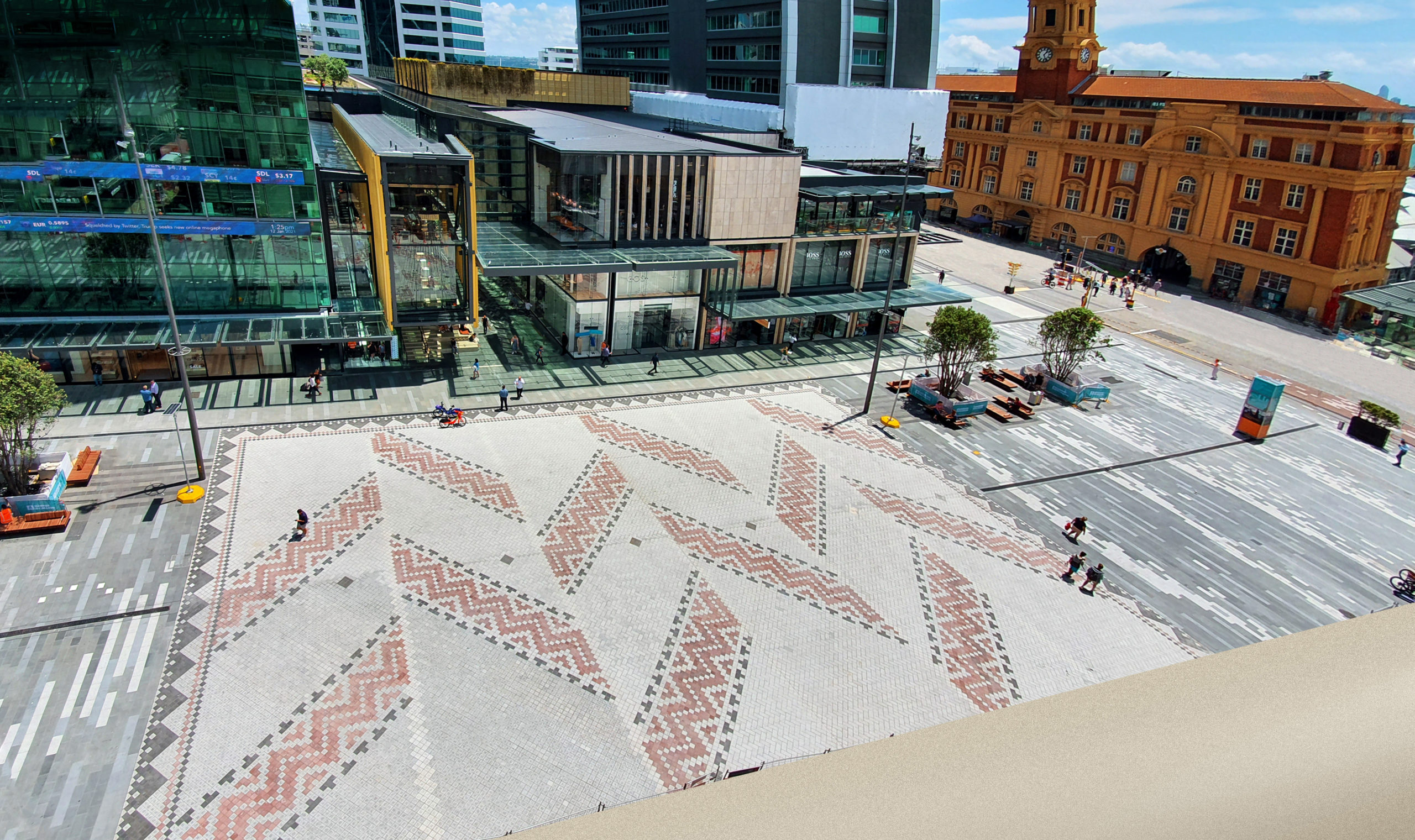Project Description
This project achieved a ‘Leading’ As Built IS Rating.
Linking the existing dead-end Britomart Station in downtown Auckland with the Western Line 3.45 kilometres away at Mt Eden and building two new train stations at Aotea and Karangahape will make the city’s electrified rail network more efficient, providing a world standard rail network to reduce Auckland's reliance on cars.
The CRL project aims to achieve sustainability excellence by being careful with the resources we use, optimising our carbon footprint, avoiding waste and leaving a positive social and cultural legacy for Tāmaki Makaurau. The CRL project’s partnership with our Mana Whenua Forum, which consists of representatives from eight different iwi, has ensured that their invaluable contribution of Māori mātauranga benefits the project and challenges us to work harder towards supporting the principles of kaitiakitanga. DSBJV began construction on Contract 1 in 2016 with works completed in October 2021.
Contract 1 included works in Britomart Station (west of the existing gate line) to change from a terminating to a through-station, the construction of twin 136m tunnels under the Chief Post Office (in which the station is housed) and Lower Queen St, and the reinstatement of the surrounding urban realm. This included a new public square - Te Komititanga, designed by mana whenua artists and weavers. This contract excluded trackwork and rail systems.
Britomart station, the busiest on the network, is in the heart of Auckland's CBD and housed in the historic and protected Chief Post Office building. This masonry building was underpinned to allow the tunnels to be built underneath, and the station remained operational throughout. The work was undertaken in close proximity to offices and residential buildings, some of which also have heritage status, and so the designation conditions set strict criteria around noise and vibration limits.
From the outset CRL Ltd was determined to deliver an exemplar project - using the scale and complexity of the country's largest transport infrastructure enterprise to push the benchmark higher for construction, workplace safety, environmental sustainability, and to reach into the community with targeted training and employment opportunities for those typically disadvantaged in the workplace.
Key Achievement
This project is a critical step in doubling the rail capacity of Tāmaki Makarau, Auckland. Through a vast number of initiatives to raise the project’s environmental and social performance the contract targeted and achieved ‘Leading’ design and as-built IS ratings.
Resource efficiency was central with over 97% of construction and demolition waste and 100% of spoil diverted from landfill. Over the projects 100-year lifespan measures taken to improve efficiency through design and construction will result in:
- 17.8 per cent reduction in peak operational energy use
- 23 per cent reduction in operational carbon emissions and
- 58 per cent reduction in operational water use
Through partnership with our Mana Whenua Forum, nominated designers have brought to life cultural narratives in the urban realm, with the creation of Te Komititanga. Participation in CRL Ltd’s Progressive Employment Programme pilot, provided opportunities for Māori and Pasifika youth to gain experience across construction sector roles.
Project Highlights
Highlight 1
Level 3 verified for Man-6 Reporting and Review and Man-7 Knowledge Sharing Results:
- CRL Ltd has issued annual sustainability reports detailing performance on the Infrastructure Sustainability Rating, zero waste to landfill, calculating a carbon footprint and materials monitoring, social outcomes achieved, and engagement with Mana Whenua.
- Leaving a legacy was a cornerstone of sustainability thinking for this contract. With a strong focus on knowledge sharing designed to extend beyond the life of the project through initiatives which support development of the sustainability capacity and capability of the sector.
Achieved through:
- Well defined and integrated sustainability management system with regular reviews and reporting to sponsors, CRL Ltd and DSBJV Boards, Senior Leadership Teams, Mana Whenua Forum and the Community Liaison Group.
- The CRL Infrastructure Sustainability Management Plan and Sustainability Communications Framework provided for sharing sustainability knowledge by both CRL Ltd and the contractor, both within the project team and wider - with AT, external stakeholders and general public. Initiatives included: an internal knowledge sharing database; public website on sustainability aspects; CRL sustainability forums; conference papers and presentations.
Highlight 2
Waste Management Level 3 verified for Was-2 Diversion from Landfill.
Results:
- 100% of spoil diverted from landfill.
- 97% of construction and demolition waste diverted – keeping 8,303t out of landfill.
- 74% office waste – 24t diverted from landfill.
Achieved by:
- A project target of zero waste-to-landfill.
- Avoiding/reducing waste through procurement and design optimisation.
- Teams committed to reducing waste generated on and off site.
- Onsite separation of concrete, steel, clean fill, office waste, compost.
- Offsite sorting by Green Gorilla of the remaining construction waste.
Reusing waste materials on and off site including:
- Timber framing reused for formwork.
- Polystyrene reused as: swimming pool fill, house, garage and barn. insulation, for retaining walls, surfboards, and model making fill.
- Fixtures and fittings sent to community recycling centres.
- Interblocks and kerbstones salvaged and reused.
- Timber hoardings reused.
- A coffee kiosk disassembled and relocated to Owairaka Community Garden.
Highlight 3
Energy Level 3 verified for Ene-1 Energy and carbon monitoring and reduction and Ene-2 Opportunities
Results:
- Modelling shows a 23% reduction in Scope 1, 2 and 3 emissions over the infrastructure’s 100-year life cycle.
Construction energy efficiencies were achieved through:
- A change in construction methodology from using contiguous piles in pre-treated columns to diaphragm walls and mini piles underneath the Chief Post Office (CPO) buildings.
- The replacement of diesel generators with grid electricity for site offices and on-sire equipment.
Operational energy efficiencies were achieved through initiatives that will reduce emissions (in order of importance):
- Station plant efficiency.
- Removal of radiant heating in the station.
- Energy saving modes added to the escalators.
- Motion and daylight sensors for the station lighting.
- Switching from diesel generators to grid electricity during construction (saving close to 35,000 litres of diesel - an 85% reduction in emissions).
- Changes to piling methodology.
Highlight 4 Water & Receiving Water Quality
Level 3 verified for Wat-1 Water use monitoring and reduction, Dis-1 Receiving Water Quality, and Level 2 for Wat-2 Water saving opportunities.
Results:
- A Water Treatment Plan reduced construction water consumption by 21%.
- An estimated 58% reduction in water use over the lifecycle of the station (including construction and 100-year operational lifespan).
- A 13% saving is projected for the urban realm during the 100-year design life of the station.
Achieved by:
- Modelling all significant water uses, auditing existing water use at the Britomart station and back casting savings from water saving initiatives.
- Monitoring actual water usage during construction.
- Use of a water treatment plant and other mitigation measures as part of a water quality monitoring programme to support receiving water quality.
Initiatives to reduce water use during construction included changes to construction methodology:
- From secant piles to diaphragm walls underneath the Central Post Office (CPO) building, reducing the amount of water needed for the piling rig.
- From bored piles and jet grouting to secant piles in Lower Queen Street, reducing the jet-grouting water requirements.
- Introduction of water-efficient fittings, including toilets and urinals, in the re-developed station.
- Installation of more drought resistant native tree species in the public realm with moisture probes that reduce the need for watering.
Highlight 5 Heritage
Level 3 verified Her-1 Heritage assessment and management and Her-2 Monitoring
Results:
- The Chief Post Office (CPO), designed in 1909 in Edwardian Baroque style, is a listed heritage building of regional and national significance. Despite the challenge of building tunnels directly below the existing fabric of the building was maintained and all spaces redeveloped in accordance with conservation principles.
- A key aspiration was to keep the integrity of the historical character intact, with a design that felt as if it touched the existing fabric only lightly, despite the radical changes that were happening due to the excavation of tunnels through the building.
- Mana Whenua cultural narratives are prominently embedded within the design of Auckland’s newest premier civic space – Te Komititanga - immediately outside the CPO, which features 137000 basalt pavers in a pattern design. Created by Mana Whenua artists and weavers, Mana Whenua gifted the name Te Komititanga meaning ‘to mix’ or ‘to merge’ in Te Reo Māori. Two bodies of water -Wai Horotiu, the stream that once ran down Queen Street, and the Waitematā Harbour are referenced. It also alludes to the mixing or merging of people as they commute through the city using the nearby train, ferry and bus services.
Achieved by:
- Completion of detailed heritage assessments, including a baseline survey.
- Careful removal, labelling, storage and restoration of sensitive heritage features.
- Monitoring the building in real time, during the foundation load transfer, to ensure the building remained precisely within the 3mm lift limit.
- Continuous monitoring sensors installed throughout the building ensured the structural integrity of the building was maintained.
- Artefacts and relics unearthed within the site’s relatively small construction footprint included remnants from the city’s history were carefully catalogued and many will be displayed at the renovated station.
- Remains of the first Queen Street Wharf, built in the 1800s were also discovered and because the wharf’s timber was in surprisingly good condition, some was used as timber finishes in the renovated station.
- As part of the Cultural Values Assessment, CRL Ltd’s Mana Whenua Forum has undertaken hikoi (site visits) and been directly involved in design as project partners.
Stakeholder Engagement Level 3 verification for Sta-1 Stakeholder engagement strategy and Sta-2 Level of engagement.
Results:
- Comprehensive stakeholder engagement strategy.
- High levels of stakeholder engagement.
Achieved by:
- Consulting with stakeholders via open days, newsletters, CRL Design Roadshows (13 suburbs through Auckland), one-on-one meetings, presentations and the website as per the Construction Communication Consultation Plan (CCCP). Specific issues are highlighted on the website and during open days.
- Involving the local community in the design of the environmental management plans. Draft plans were written and provided to a community liaison group (CLG) to review as residents and businesses in the area. All comments from the community were reviewed and either used to amend the plan or provided with a reason why they were not included in the plans. Negotiable and non-negotiable issues were explained during the CLG meetings.
- Collaborating with our Mana Whenua Forum. This partnership makes the CRL a unique project by incorporating culture and history in station designs and public space.
Acknowledgements
International Firsts World First Innovation: Embedding cultural values within a sustainability rating framework. Having cross checked this initiative and the inclusion of cultural values against other international rating schemes,i has been confirmed that this is a world first. Mahi Rauora Aratohu – a tailored Infrastructure Sustainability technical manual developed in partnership with our Mana Whenua Forum that responds to the cultural context of Tāmaki Makaurau.
The work undertaken, collaborating with mana whenua to embed Māori cultural values across the IS framework includes the following outcomes:
- Transformation of a select number of IS credits to address the cultural values of Mana Whenua.
- Raising the knowledge base of our client team and contractors.
- Responding to the cultural values of Mana Whenua in the delivery of CRL.
New Zealand Firsts New Zealand First Innovation: Real time noise and vibration monitoring and alert system DSBJV engaged a web-based real time monitoring and alert system for noise and vibration monitoring. This was the first time this technology had been used in New Zealand. Richard Preece, Auckland Council’s Team Leader: Compliance Monitoring Central confirmed the approach was “above and beyond current industry standards.”
This innovation achieved the following outcomes:
- A marked shift away from reactive, and retrospective, complaint-based noise and vibration monitoring to the use of real time alerts where preset thresholds were exceeded.
- Allowing a more rapid loop between notification and verification, information was able to be responded to proactively.
- Allowing more informed and timely engagement with stakeholders.
- Identification of unexpected exceedance and adaptive management for future occurrences.
Testimonial
“Having the CRL project’s sustainability goals and performance externally validated through ISC has been both challenging and rewarding. Ultimately, it’s meant that we have had clear goal posts to work towards with our construction partners. We’re extremely proud of our sustainability wins on Contract 1. DSBJV and our design partners readily took on the sustainability challenges set and the innovative thinking applied to both design and construction has been exemplary.
The work we’ve done together has shown what can be achieved and the learnings from Contract 1’s sustainability journey are already being taken on by other parts of the CRL project.” Scott Elwarth, Head of Delivery, City Rail Link Limited
Project Details
- Proponent: City Rail Link Ltd
- Completion Date: 21 October 2021
- Assessor Name: Liz Root
- Certified Rating: As-Built Rating
Project Website
To find out more information about this project, visit:
https://www.cityraillink.co.nz/



